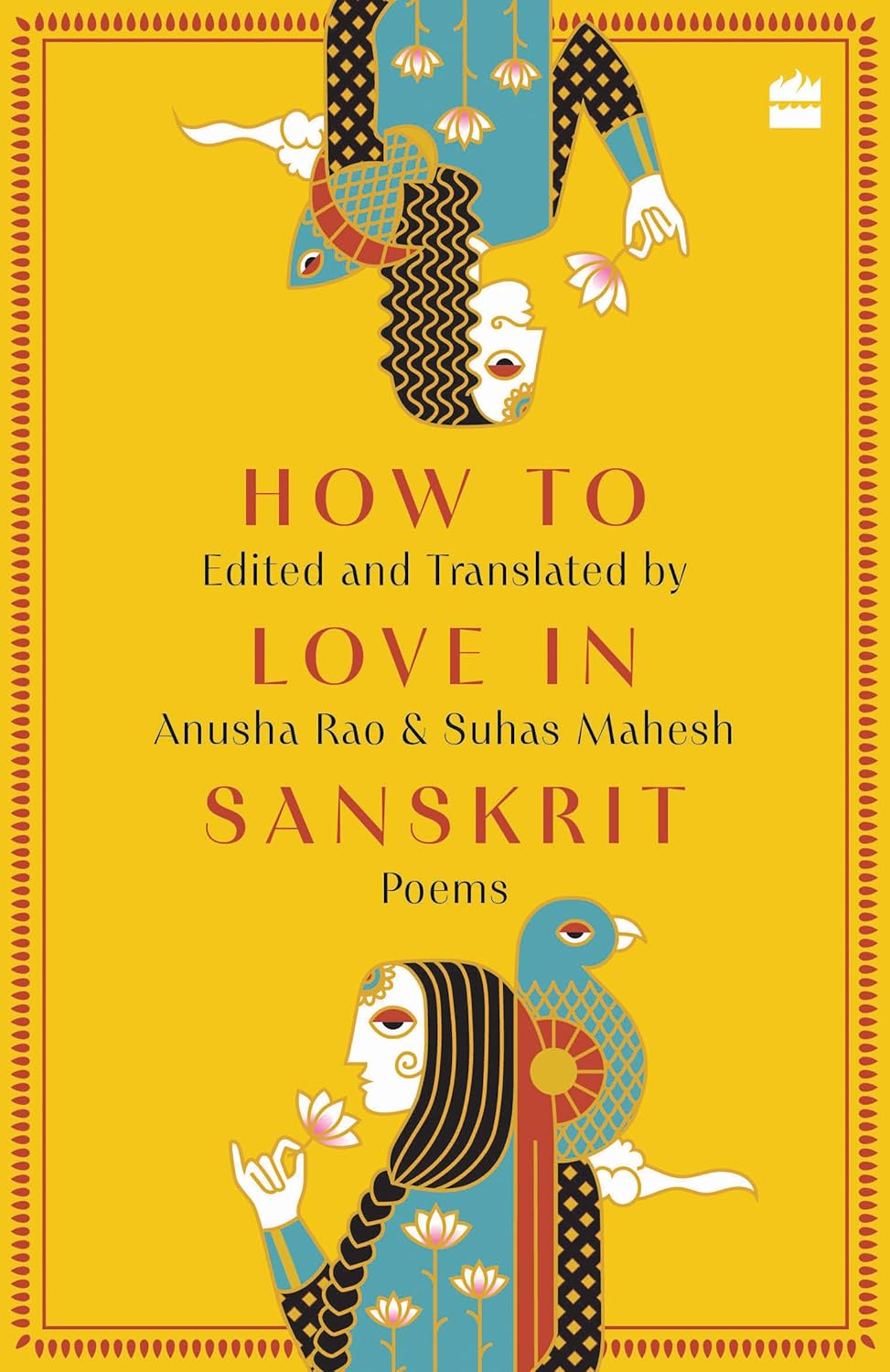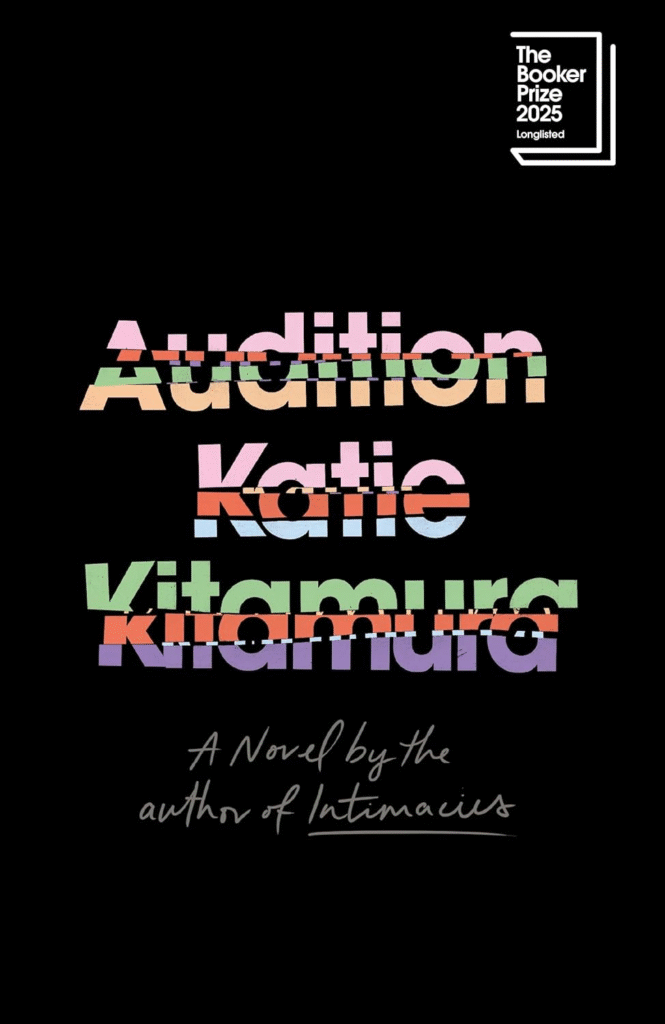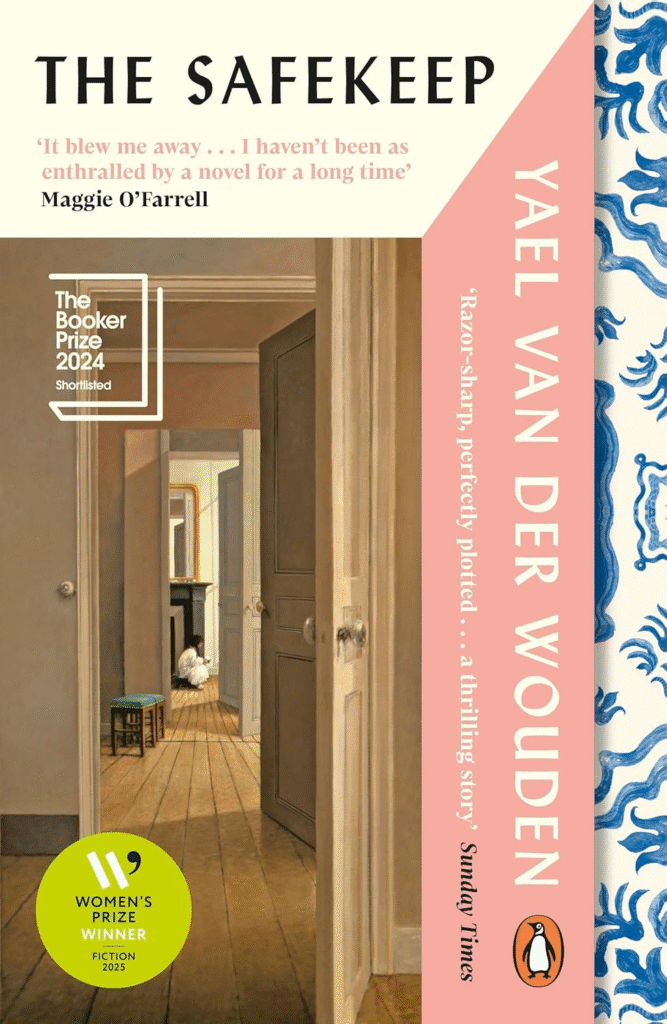Love, in all its intricate shades and forms, has remained a universal emotion deeply embedded in the culture and literature of civilizations across the world. Yet, few traditions have captured it as richly and elegantly as classical India. The book How to Love in Sanskrit by authors Anusha Rao and Suhas Mahesh, published on 14 February 2024, offers a compelling invitation into the world of ancient Indian love poetry, presenting a collection of verses and short prose translated from Sanskrit with stunning clarity and resonance. Drawing from a vast array of sources including revered poets like Kalidasa and Banabhatta, Buddhist and Jain monks, royal courts, and even contemporary voices, this book becomes a vibrant literary bridge between past and present.

What sets How to Love in Sanskrit apart is not merely the curation of 218 exquisite verses but the way they have been written into modern English by authors Anusha Rao and Suhas Mahesh. Their translations are neither stiff nor overly literal but instead full of charm, cheek, and poetic elegance. The authors have consciously distanced themselves from academic dryness, choosing instead to breathe fresh life into ancient expressions of love, longing, jealousy, reconciliation, and intimacy. Each verse reveals something strikingly human and relevant, showing that while centuries may pass, the core emotions of the heart remain unchanged.
A shining example of this emotional resonance appears in one of the most striking entries in the book:
When he came home
I didn’t look at him
Didn’t speak to him
Didn’t offer him anything
That’s how they guessed.
This quiet, minimalistic verse holds a world of suppressed feeling. It captures the tension and vulnerability of love through what is left unsaid, proving that absence and silence can often speak louder than dramatic declarations. It is through such moments that How to Love in Sanskrit reveals its emotional depth, letting the reader connect intimately with voices from long ago.
Though rooted in an ancient language often associated with the sacred or scholarly, How to Love in Sanskrit turns Sanskrit into something playful, accessible, and profoundly human. The book reminds us that Sanskrit was not just a language of gods and rituals but a living, breathing medium through which people once wrote poetry, flirted, argued, confessed, and made peace. Through the authors’ precise yet light-hearted approach, the ancient verses avoid being reduced to mere historical relics and instead come alive with wit, sensuality, and empathy.

This book is far more than a simple translation project. It is an ode to the timeless nature of love and the creative expression it inspires. Reading How to Love in Sanskrit feels like turning the pages of an ancient diary, where every entry reveals a slice of life and desires hidden behind veils, heartaches dressed in metaphors, flirtations wrapped in verse, and philosophical reflections softened by tenderness. The poetic landscape presented here is diverse and textured, encompassing the full range of emotional and psychological experiences that still resonate today.
The contextual translation of each verse ensures that readers unfamiliar with Sanskrit can still grasp its emotional nuance. However, for those who appreciate the original text, the source references and select original verses included at the back of the book offer a rewarding experience. Many readers might wish the Devanagari script appeared alongside each translation, yet this design choice likely stems from the need to preserve readability and visual flow.
Ultimately, How to Love in Sanskrit achieves something rare. It educates without being didactic, modernizes without losing authenticity, and entertains while stirring deep emotional insight. It is a book that feels equally at home on the nightstand of a poetry lover, the shelf of a literature enthusiast, or the hands of someone simply looking to understand the emotional genius of India’s literary past.
In a time when poetry is often rushed or overlooked, this collection reaffirms its value not only as art but as a reflection of how we have loved, desired, and connected across millennia. Whether one is deeply familiar with Indian classical literature or encountering Sanskrit poetry for the first time, How to Love in Sanskrit offers a profound, moving, and joyfully human experience.
Read Also: Wafadari Imaandari Zimmedari by Lt Gen Dhillon
Book Availability, Formats, and Pricing
How to Love in Sanskrit by Anusha Rao and Suhas Mahesh was released on 14 February 2024 by Harper Perennial, an imprint of HarperCollins Publishers, and is available in both hardcover (320 pages) and Kindle editions. In India, the hardcover is priced around ₹374 on Amazon, while the Kindle version offers an affordable digital option at ₹206. For international readers, the book is also available through Amazon.com, Barnes & Noble, and HarperCollins.com, with prices ranging from $14.99 to $32.95, depending on the format and platform. Sellers like Biblio and AbeBooks also stock imported copies for global buyers. The book is written in English, with poetic yet simple translations that make ancient Sanskrit and Prakrit verses accessible to modern readers. With its thoughtful presentation, contextual notes, and emotional clarity, How to Love in Sanskrit is perfect for poetry lovers, literature enthusiasts, or anyone looking to explore the timeless beauty of Indian romantic verse.
Read Also: Gods Guns & Missionaries by Manu S Pillai
Timeless Verses, Modern Hearts: Why How to Love in Sanskrit Still Speaks to Us
How to Love in Sanskrit is not just a book instead it is a revival of timeless feelings through poetry that still speaks to the modern heart. It brings to readers a selection of love poems from ancient India, carefully chosen and translated in a way that feels fresh, intimate, and emotionally true. This collection deserves attention because it does what many translations fail to do and it makes centuries-old literature feel personal and alive.
The authors, Anusha Rao and Suhas Mahesh, were not driven by academic pressure or literary trends. Instead, their work came from a place of genuine love for Sanskrit poetry and a desire to make it accessible. They noticed something important: readers around the world are often seen enjoying writers like Rumi and Dante in cafes, book clubs, and airports. But the works of Kalidasa, Bhavabhuti, and other Indian poets rarely find the same place in everyday reading. The issue, they believed, was not the poetry itself, but how it had been translated and presented. For over two centuries, Sanskrit literature has been translated, but few versions were created with the everyday reader in mind.

That is where this book stands apart. It was created for people who enjoy beautiful writing, even if they have never read a Sanskrit verse before. The authors spent two years exploring over ten thousand poems from around 150 classical texts that span two thousand years. Out of that vast collection, they selected just over two hundred that capture the many shades of love, its passion, silence, humor, sorrow, longing, and tenderness.
What makes their approach so unique is how they translate emotion, not just language. The authors follow a core idea from Sanskrit tradition: that the soul of a poem lies in its rasa, or emotional essence. Instead of clinging to complex structures like meters, rhymes, and alliterations that often do not work well in English, they focused on the heart of each poem. Their minimalist style brings out the feelings behind the words while keeping the reading experience simple and sincere.
Take this poem, for example:
Game theory
Desire works
in a backwards fashion:
If they’re disinclined
you desire them more.
If they dance to your tunes
your desire slackens.
Therefore, if you want
the greatest pleasure
practise playing hard to get.
— Heart’s Delight, Someshvara, 1100 CE, Karnataka
This verse from Heart’s Delight by Someshvara cleverly explores how human desire often grows when something feels out of reach. It explains that when someone shows disinterest, our attraction intensifies, but when they respond too easily, our desire fades. The poem ends with a playful suggestion: if you want to keep love exciting, it helps to remain a little mysterious. This verse captures the quiet ache of absence. No dramatic words are used, yet it leaves a powerful impression. It is poetry that speaks directly to the reader, with no need for explanation.
Another verse brings in a soft smile with its honesty:
Prolonging the moment
As the girl at the well
pours out water
making it trickle thin
and thinner still,
the traveller bends,
eyes upwards
sipping the water
through cupped hands
spreading his fingers wide
and wider still.
— Seven Hundred Gahas, 100 CE?, Deccan
This verse went viral in old India. Umpteen other works across languages quote it and imitate it.
This poem uses the slow pouring of water at a well to beautifully capture the tension and intimacy of a lingering romantic moment.
Why I am an atheist
When the creator made her
if he had his eyes open
would he have let her leave heaven?
Surely not.
If he had his eyes shut
could he have achieved such perfection?
No chance.
Therefore it is proved
that the Buddha was right:
There is no creator.
— Treasury of Verse-Jewels, 1000 CE, Bengal
This verse is attributed to Dharmakirti, a heavyweight of Buddhist philosophy. By some accounts, he was based at the great monastic university of Nalanda (now in Bihar).
This sharp, bold and witty poem challenges the idea of a divine creator by admiring a woman’s beauty. It humorously argues that no god whether with eyes open or shut which could have made someone so perfect, leading the poet to side with the Buddha’s teaching that there is no creator at all.
Polly wants a cracker
The pet parrot
begins to loudly squawk
before the elders of the house
repeating all it had heard
the night before.
The mortified girl
hastens to take off her ruby earring
and dangles it before the parrot
like it were a pomegranate seed,
bribing it into silence.
Amaru’s Hundred, 600 CE?
This short poem humorously portrays a pet parrot revealing a girl’s private secrets to the elders by repeating what it overheard the previous night. Embarrassed, the girl tries to silence the bird by offering her earring as a bribe, showing how gossip even from a parrot can cause social discomfort.
I’m no hero
They say that Rama,
parted from Sita,
held back the mighty ocean
to build a bridge.
And here I am,
parted from her –
can’t even
hold back
a few tears.
— Vidyakara Mishra’s Thousand, 1800 CE
This poem humbly compares the speaker’s emotional vulnerability to the heroic strength of Rama from the epic Ramayana. While Rama built a bridge across the ocean to reunite with Sita, the speaker admits he cannot even hold back his tears after parting from his beloved, showing that love and longing can make even the strongest feel helpless.
Can’t take my eyes off you
On whatever bit of her
the gaze first lands,
there it stays pinned.
No one knows her
in all her loveliness.
— Seven Hundred Gahas, 100 CE?, Deccan
This poem beautifully captures the overwhelming charm of a woman’s beauty by suggesting that wherever your eyes first land on her, you are instantly captivated. It implies that her beauty is so complete and mesmerizing that no one can truly take it all in at once. This verse reflects the timeless nature of love at first sight and the irresistible power of attraction.
The weaker sex
She goes to meet him
in the dead of night
braving the rain
charging through the thorns
crossing a river or two
even stomping on snakes
without a care.
Then she reaches his bed
and pauses for his arm
to help her up.
Vidyakara Mishra’s Thousand, 1800 CE
This poem celebrates the courage and determination of a woman who faces dangers like rain, thorns, rivers, and snakes just to meet her lover. Despite being called “the weaker sex,” her bravery outshines all fear, showing love’s strength and quiet defiance.
Confidence
Dear God,
make him hang out
with other women more.
He does not seem to realize
what a catch I am.
Seven Hundred Gahas, 100 CE?, Deccan
This witty and bold poem reflects a woman’s strong self-worth and playful confidence in her own value. Instead of jealousy, she wishes her lover would interact with other women so he can better recognize how special she truly is.
Happily never after
He’s handsome, they all say.
But frankly
I don’t care much for him
because he’s my husband.
Would you enjoy ambrosia
if you had to drink it every day
on the doctor’s instructions?
This witty and honest poem humorously questions the charm of routine love. It compares a husband to ambrosia (the food of the gods), suggesting that even something wonderful loses its appeal when it becomes a daily obligation. It is a playful take on how passion can fade in everyday domestic life.
Extrasensory perception
‘She does every little thing I like,’ he gushes.
Little does he know
he likes every little thing she does.
— Light on Love, 1000 CE, Malwa
This sweet and clever verse shows how love can blur the lines between preference and admiration. The man believes the woman is doing everything to please him, but in truth, he adores her so much that everything she does naturally becomes lovable to him. It is a poetic reminder of how affection shapes perception.
Sui generis
In all the world
filled as it is with lovely women
this much may be said of her:
only her right half
is a match for her left.
This poem offers a beautiful compliment, saying that the woman is so uniquely perfect that only one half of her can rival the other and no one else in the world compares. It is a poetic way of expressing that her beauty is unmatched and entirely her own.
These poems are not relics of the past. They are pieces of the human experience that still feel familiar today.
The authors also show great care in how they guide the reader. In the introduction, they gently remind us not to confuse the speaker in a poem with the real-life writer. For instance, if a verse is written in the voice of a young village girl, it does not mean the poet was one. This reminder helps readers avoid assumptions and appreciate the poetic voice as a creative expression.
Translating from a language as rich and layered as Sanskrit also means accepting that not everything can be carried over. Some words, ideas, and cultural references are too deeply rooted in their time and setting. Trying to include everything can make the poem feel more like a history lesson than a piece of art. That is why the authors chose to focus on what matters most ie the feeling, the mood, and the soul of each poem.
They describe this process beautifully through a comparison. Translating Sanskrit poetry is like taking an Indian wedding full of colours, sounds, and ceremonies, and reimagining it as a quiet church wedding in another country. Some details will naturally change, but the meaning and beauty of the moment can still remain. In the same way, the poems in this book have been reshaped for a different language and audience, but they continue to carry the same emotional weight.
This book is not meant for experts alone. It is for anyone who has ever been in love, missed someone, written a letter they never sent, or smiled at a memory. It is for those who enjoy thoughtful writing, who feel connected to emotions across time, and who find beauty in quiet, powerful words.
How to Love in Sanskrit invites you into a conversation that began thousands of years ago and still matters today. It brings voices from ancient texts into the present moment and lets them speak with honesty and elegance. These poems are not just translations but they are reminders that the human heart has always loved in the same way. And now, thanks to this book, we can listen.
Read Also: Caste Pride: Battles for Equality by Manoj Mitta
Praise for How to Love in Sanskrit
Anusha Rao shares that the book is a heartfelt attempt to help readers connect with the emotions of those who lived thousands of years ago through their expressions of love. Every poem was carefully selected and translated in a way that avoids heavy language, making it enjoyable and relatable for today’s readers.
Suhas Mahesh explains that the book brings 3,000 years of Indian love poetry to life with humor, honesty, and emotion. With 220 poems, the aim is to teach love not through lessons, but through poetry that anyone can connect with even those new to poetry. The book introduces fresh material that many scholars and readers may never have encountered before.
Rahul Soni of HarperCollins calls the book charming, moving, and full of surprises. He praises the translators for using modern, playful English that appeals to both casual readers and poetry lovers. It is a great gift which is perfect for anyone who loves meaningful, beautiful books.
What others are saying:
- Arundhathi Subramaniam calls the book witty, joyful, and a refreshing take on Sanskrit poetry. She says it proves that poetry can cross centuries and still touch the heart.
- Bibek Debroy praises the effortless feel of the translations and notes how the editors make difficult work seem easy. He believes the book will inspire readers to explore the original texts.
Final Thoughts
How to Love in Sanskrit is a refreshing and emotionally rich anthology that brings ancient poetry into the hearts of modern readers. With translations that are witty, touching, and sometimes playfully modern, this book manages to keep the original charm of classical Sanskrit and Prakrit verses while making them easy to relate to today. Whether you are someone who enjoys timeless love stories or someone looking to explore India’s poetic past, this book offers something truly special.
The creative decision to use present-day language, including references to modern life like phones and dating apps, makes How to Love in Sanskrit feel current and alive though it may not suit all tastes. Still, its range of emotions, from jealousy and longing to humor and passion, speaks to how universal and enduring love really is.
With helpful notes and an appendix that allows curious readers to explore the original verses, the book proves to be both educational and entertaining. It opens the door to Sanskrit poetry in a way that feels joyful, accessible, and deeply human.
For poetry lovers, curious readers, or anyone wanting to discover the softer, sassier side of ancient India, How to Love in Sanskrit is a must-read that will leave you smiling, sighing, and maybe even writing a few verses of your own.
Read Also: Joothan: A Dalit’s Life by Omprakash Valmiki




